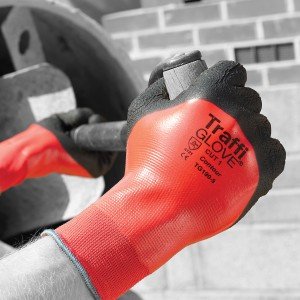 Personal protective equipment (PPE) is a cornerstone of safety in various working environments, especially to those where risk of injury to hands is present. Of course, selecting appropriate PPE can be tricky for the untrained professional and can simply come down to a matter of comfort or cost for those who are unsure what they are looking for. Franz Lorenschitz, marketing manager for TraffiGlove investigates the potential dangers of comparing cost against quality.
Personal protective equipment (PPE) is a cornerstone of safety in various working environments, especially to those where risk of injury to hands is present. Of course, selecting appropriate PPE can be tricky for the untrained professional and can simply come down to a matter of comfort or cost for those who are unsure what they are looking for. Franz Lorenschitz, marketing manager for TraffiGlove investigates the potential dangers of comparing cost against quality.
When buying PPE en masse, it is understandable that low cost can be incredibly attractive. Of course, there is a potential risk that low cost will not equate to high quality, meaning equipment may fail and need to be replaced much sooner than slightly more expensive counterparts, costing the company more money in the long run.
When it comes to gloves and ensuring an adequate level of hand protection, this is an area that should not be overlooked in favour of lower costs. Ensuring the right level of cut protection along with the highest level of dexterity and comfort for the job is incredibly important.
One of the most important things to look out for when selecting safety gloves is compliance with the relevant EN standards. Buying cheap gloves doesn’t necessarily guarantee that gloves will have been tested in line with this standard, which is why it’s so important to buy from a reputable manufacturer who will ensure their products meet such standards. After all, it’s their reputation as well as your safety at stake!
All TraffiGlove products are tested and conform to the requirements of EN388, which covers the test requirements for safety gloves that are sold as protection against mechanical risks. Our innovative 3 colour-coded system allows for ease of identification when it comes to seeing if workers are wearing the correct level of cut protection for the job at hand. The cut protection level is determined by colour, with red (warning) gloves providing the lowest level of cut protection, amber providing medium level, and green (safe to go) the highest level of protection.
When selecting safety gloves, a common issue arises when comfort and dexterity are given more precedence than cut protection. Those working in skilled jobs, such as carpenters or electricians often sacrifice protection for improved dexterity by choosing a cheaper, often thinner glove or worse still, do not wear gloves at all. This practice should be discouraged, not only as hand and finger agility can be badly hindered through injury, ultimately leading to lost man hours, but also because there are safety gloves out there that can provide excellent protection, comfort and dexterity for the user.
Reduced cost can often mean reduced quality, this applies across many different markets and the same applies to PPE. Scrimping on quality increases the chance of lost work hours and money spent replacing defunct equipment that doesn’t last a reasonable amount of time. The smallest level of wear and tear such as a split seam or worn down palm can render a safety glove insufficient for the task at hand and sadly, there are examples where inadequate gloves are being worn for certain tasks – this endangers the worker and also means that safety managers are not compliant with legal safety procedure.
Working closely with our customers, gaining valuable feedback over the long term, we are confident that a glove that offers a combination of the correct level of cut protection and comfort at a reasonable price will allow for a happy work force and a healthy bank balance too.
Franz Lorenschitz is marketing manager for TraffiGlove
Approaches to managing the risks associated Musculoskeletal disorders
In this episode of the Safety & Health Podcast, we hear from Matt Birtles, Principal Ergonomics Consultant at HSE’s Science and Research Centre, about the different approaches to managing the risks associated with Musculoskeletal disorders.
Matt, an ergonomics and human factors expert, shares his thoughts on why MSDs are important, the various prevalent rates across the UK, what you can do within your own organisation and the Risk Management process surrounding MSD’s.



This is nothing more than an advert for your company! I for one am fed up with SHP being handed over to all and sundry to peddle their wares or get CPD points for writing irrelevant articles! The excessive use of gloves across too many industries is trying to achieve the Nirvana of zero hand injuries and introduces other, more significant problems. All personnel being forced to wear gloves (as on too many construction projects), simply makes a mockery of H&S. Electricians and the like need to have dexterity and feel when handling small components. Sweaty hands bring discomfort and… Read more »
I’m unsure about this though.